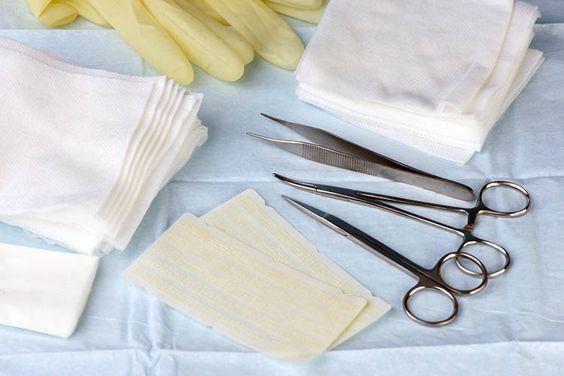Wound suppuration is a common problem in daily life. It is an inflammatory response of the body to infection. When a wound becomes suppurated, it not only prolongs the healing time but may also cause more serious health problems. Therefore, understanding the cycle of wound suppuration and its treatment methods is crucial to accelerate wound healing and prevent complications.

What does a festering wound look like?
Under normal circumstances, when the skin is injured, the body will start a natural defense mechanism to repair the damaged tissue. However, if the wound is contaminated with bacteria, infection may occur, leading to suppuration. Suppuration is the result of white blood cells fighting bacteria. These white blood cells die after engulfing the bacteria, forming pus. Pus is usually yellow or green and contains dead white blood cells, bacteria, tissue debris, and fluid.
How long does it usually take for a wound to fester?
The length of the wound's purulent period is affected by many factors, including the size and depth of the wound, the type and amount of bacteria, the individual's immune system status, and the treatment and care received. Generally speaking, if the wound infection is mild and treated promptly and appropriately, the purulent period may be controlled and begin to heal within 7 to 14 days. However, if the infection is severe or improperly treated, the purulent period may be extended to several weeks or even longer.
Factors that affect the length of wound suppuration period :
1. Infection severity: The severity of wound infection directly affects the length of the suppurative period. Mild infection may be controlled in a short period of time, while severe or chronic infection may lead to a prolonged suppurative period.
2. Bacterial species: Different types of bacteria cause different periods of infection. For example, infections caused by Staphylococcus aureus are usually more severe and last longer than infections caused by Escherichia coli.
3. Personal immunity: The strength of an individual's immune system directly affects the speed of wound healing. People with strong immunity may be able to control the infection faster and shorten the suppuration period.
4. Treatment methods: Appropriate treatment methods can effectively control infection and accelerate wound healing. On the contrary, improper or delayed treatment may prolong the suppuration period.
What are the measures to prevent wound suppuration?
1. Treat wounds promptly: Clean the wound immediately after injury to reduce the chance of infection.
2. Keep the wound clean and dry: avoid prolonged contact between the wound and moisture or dirt.
3. Appropriate use of antibiotics: Use antibiotic ointment or oral antibiotics under the guidance of a doctor.
4. Strengthen nutrition: Maintain good eating habits and consume enough protein and vitamins to support the body's self-healing ability.
5. Avoid external stimulation: Reduce external stimulation to the wound, such as friction and pressure.

The length of the wound suppuration period varies from person to person, but with timely and appropriate treatment, wounds can be controlled and begin to heal within one to two weeks. It is important to pay close attention to changes in the wound, seek medical help in a timely manner, and follow the doctor's instructions for care. Through active treatment and appropriate care, the suppuration period can be effectively shortened, wound healing can be promoted, and the risk of complications can be reduced.
For more information on Innomed® Silver Ion Dressing Foam, Refer to the Previous Articles. If you have customized needs, you are welcome to contact us; You Wholeheartedly. At longterm medical, we transform this data by Innovating and Developing Products that Make Life easier for those who need loving care.
Editor: kiki Jia

 English
English عربى
عربى Español
Español русский
русский 中文简体
中文简体








